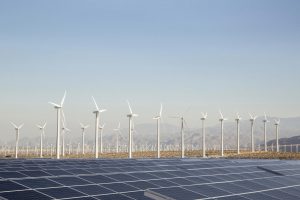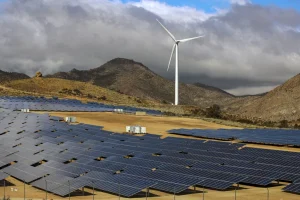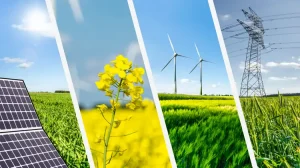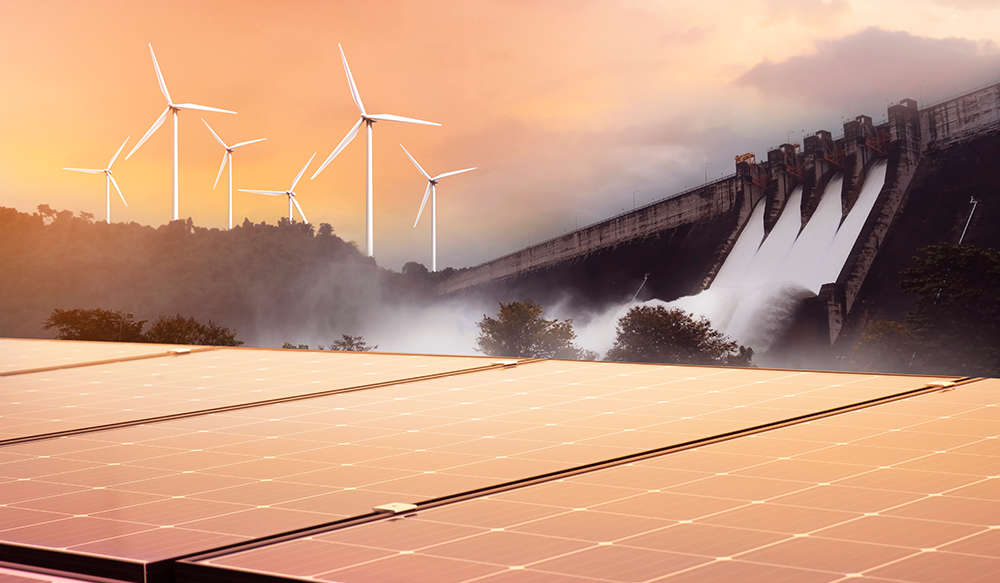1. The Rise of Renewable Energy
Renewable energy is booming, as innovation lowers costs and begins to deliver the promise of a clean energy future. US wind and solar production is breaking records and being integrated into the national grid without compromising reliability.
This means that renewables are increasingly replacing “dirty” fossil fuels in the power sector, with the benefit of reducing carbon emissions and other types of pollution. But not all energy sources marketed as “renewable” are beneficial to the environment. Biomass and large hydroelectric dams create difficult trade-offs when considering impacts on wildlife, climate change and other issues. Here’s what you should know about the different types of renewable energy sources—and how you can use these emerging technologies in your own home.

2. What is renewable energy?
Renewable energy, often referred to as clean energy, comes from natural sources or processes that are continuously replenished. For example, sunlight and wind continue to shine and blow, even if their availability depends on time and weather.
While renewable energy is often thought of as a new technology, the extraction of natural energy has long been used for heating, transportation, lighting, and more. Wind powered ships to sail and windmills to grind grain. The sun provided warmth during the day and helped keep the fire burning until evening. But over the past 500 years, people have increasingly turned to cheaper, dirtier sources of energy, such as coal and gas.
Now that we have innovative and less expensive ways to capture and store wind and solar energy, renewables are becoming a more important source of energy, accounting for more than 12 percent of U.S. electricity production. Ky. Renewable energy expansion is also happening on a large and small scale, from giant offshore wind farms to rooftop solar panels that can sell electricity back to the grid. Even entire rural communities (in Alaska, Kansas and Missouri) are relying on renewable energy for heating and lighting.
As renewable energy use continues to grow, the primary goal will be to modernize the U.S. grid, making it smarter, safer, and better integrated across regions.

3. Dirty Energy
Non-renewable or “dirty” energy includes fossil fuels such as oil, gas, and coal. Non-renewable energy sources are only available in limited quantities. When we pump gas at the station, we are using a finite resource refined from prehistoric crude oil.
Non-renewable energy sources are also often found in specific parts of the world, making them more abundant in some countries than others. In contrast, every country has sunshine and wind. Prioritizing renewable energy can also improve national security by reducing a country’s dependence on exports from fossil fuel-rich countries.
Many non-renewable energy sources can be hazardous to the environment or human health. For example, oil drilling may require tapping into Canada’s boreal forest; technology related to fracking can cause earthquakes and water pollution; and coal power plants pollute the air. On top of that, all of these activities contribute to global warming.

4. Renewable energy and our life
Advocating for renewables, or using them in your home, can accelerate the transition to a clean energy future. Even if you can’t install solar panels yet, you can still choose to use electricity from a clean energy source. Contact your utility company to ask if they offer that option. If renewable energy is not available through your utility, you can purchase a renewable energy certificate to offset your usage.




